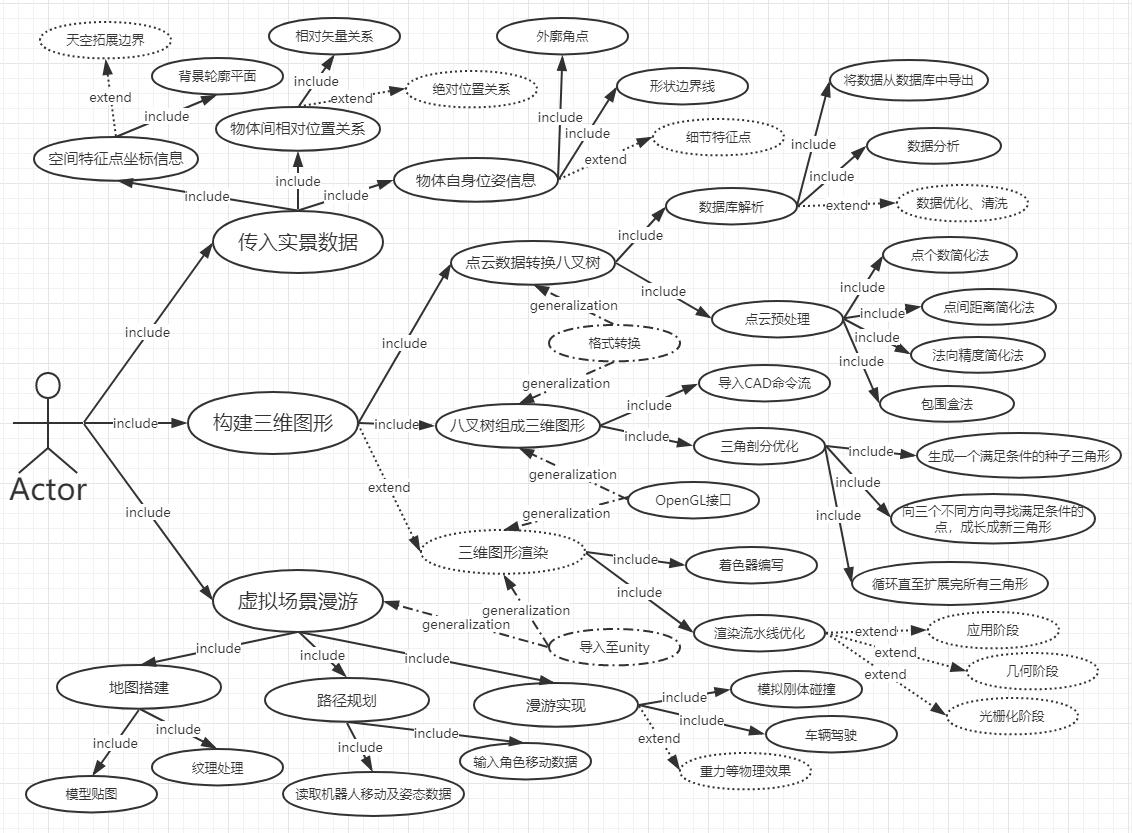A modeling background
(1) engineering practice project requirements
My issue is based on engineering practice indoor map data, the use of OpenGL rendering means to build and render three-dimensional model can be further applied to virtual reality interactive game scene.
(2) use case modeling Significance
Example entirely by standing (from an external system) to describe the function of the system on the user's perspective. In the use-case approach, we defined the system as a black box, we do not care how the system is done inside the function it provides.
By the method first described embodiment the system which is defined an external user (abstract becomes the Actor), these users are defined and system interaction occurs; for each player, and by the method described in Example what the system provides for those participants services (abstract became use Case), or how the system used by these participants. Therefore, the use case diagram, we can get an impression of the overall system is defined.
Second, modeling with Example
(1) Example FIG.
Here is the use case modeling conducted for my engineering practice.

(2) explain the content
FIG embodiment with the main contents of the design:
1, participants (Actor) refers to the presence in the human interactions are defined in the system and with the outside of the system or other systems, they represent the user or system environment.
2, use cases (Use Case) and between the service system is a system provided for, which defines how the system is used by a participant, which describes a participant to use the full functionality provided by the system a conversation occurred.
3, communications association (Communication Association) for indicating a correspondence relationship between participants and use cases, which indicates which service participants to use the system (use cases), or the service provided by the system (use cases) which is involved in It was used. mainly includes:
- Comprise (include): base will be used with the embodiment (Base) is included with cases (the Inclusion), specifically, is to be included with the embodiment of the event is inserted into the base case the flow of the stream of events
- Extended (extend): Extended event use cases (the Extension) is inserted into the base stream according to the corresponding extension point under certain conditions with Example (Base) in.
- 泛化(generalization):当多个用例共同拥有一种类似的结构和行为的时候,我们可以将它们的共性抽象成为父用例,其他的用例作为泛化关系中的子用例。
三、总结
用例图使我们对系统的功能有了一个整体的认知,我们可以知道有哪些参与者会与系统发生交互,每一个参与者需要系统为它提供什么样的服务。用例描述的是参与者与系统之间的对话,但是这个对话的细节并没有在用例图中表述出来,针对每一个用例我们可以用事件流来描述这一对话的细节内容。
与传统的功能分解方式相比,用例方法完全是从外部来定义系统的功能,它把需求与设计完全分离开来。在面向对象的分析设计方法中,用例模型主要用于表述系统的功能性需求,系统的设计主要由对象模型来记录表述。另外,用例定义了系统功能的使用环境与上下文,每一个用例描述的是一个完整的系统服务。用例方法比传统的SRS更易于被用户所理解,它可以作为开发人员和用户之间针对系统需求进行沟通的一个有效手段。